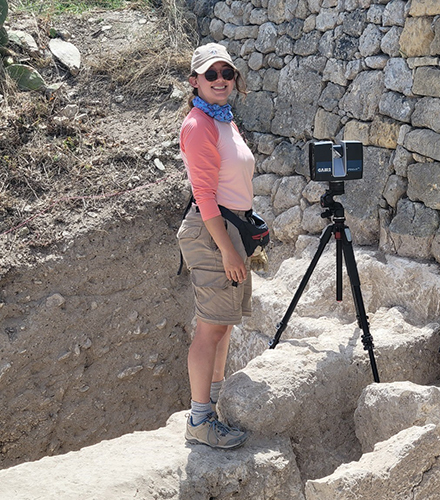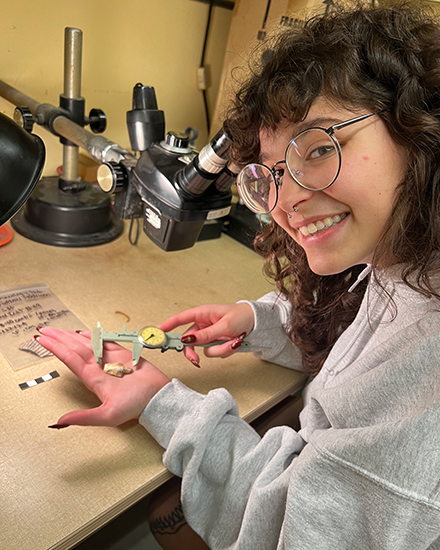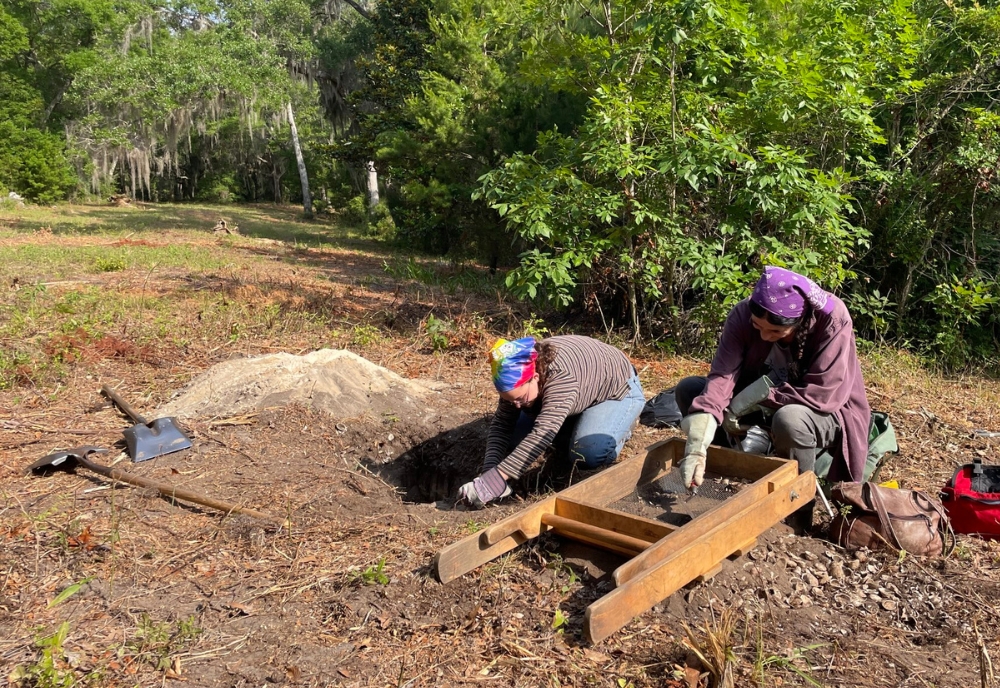College of Arts and Sciences (CAS) students Sarah Hassam and Sofia Arias have been awarded the Time Sifters Archaeology Society’s Cornelia Futor Memorial Student Research Grant.

Sarah Hassam, master’s world history student and IDEx project manager, engaging in 3D work in Malta. (Photo by Davide Tanasi)
Both Hassam, a master’s world history student and current project manager for the Institute for Digital Exploration (IDEx) at CAS, and Arias, an undergraduate anthropology student, will use the grant to assist with their upcoming field research endeavors this summer.
The Time Sifters Archaeology Society is a non-profit association of archaeologists and community members in Sarasota and Manatee counties who provide the grants to any Florida university student pursuing a major in anthropology or focusing on archeology.
The grant aims to assist with costs associated with such things as student travel to a distant archive or collection, attending a field school, or accomplishing deeper artifact analysis through various testing protocols.
Hassam—who’s area of research focuses on women, marginalized communities and theater in the Roman World, specifically on art and material culture—has already gained expertise in 3D digitization through her work with IDEx.
She will be assisting Dr. Davide Tanasi, director of IDEx and professor of history, this summer to work on 3D digitization of the archeological units, related findings, and skeletal remains at the Villa del Casal in Piazza Armerina, Sicily—a summer school hosted by ArchLabs and Università di Bologna—an antique Roman villa housing the largest mosaic collection in Southern Italy.
She will also oversee the work on re-excavating a prior excavation of a Roman domus for the Melite Civitas Romana Project—sponsored by Heritage Malta—which was originally excavated in the late 1800s and into the 1920s. Hassam aims to update documentation of the original excavation and reevaluate artifacts found from the site.
She will be leaving in early June, spending three weeks in Malta and two weeks in Sicily.
“I was really surprised and so happy [to earn this grant],” she said. “It makes a huge difference in being able to afford any of these opportunities. It really is the clincher of being able to go to Sicily or not, so it was a big deciding factor when I received this.”

Sofia Arias, undergraduate anthropology student, measuring an arrowhead found from surveying the location of USF’s future football field. (Photo courtesy of Sofia Arias)
Arias, who is focusing her anthropology path on archaeology, will be using the grant to further hone her skills of work she’s done with her USF mentor Dr. Nancy White performing surface-collecting and shovel-testing—skills she’s also put to use at USF in examining the location of the new proposed football stadium.
Arias also participated in fieldwork in northwest Florida at the famous Pierce Mounds complex, troweling and screening shell midden deposits about 1000-years-old and recovered shreds of pottery and animal remains that provide more information about what people were eating in those days.
She will be traveling to the University of Wyoming’s field school ‘Clovis to Cowpokes,’ to survey and excavate a High Plains trading site near Laramie, Wyo. and engage in fieldwork at the La Prele Mammoth site to map and excavate at Wyoming’s first coal mining town. At La Prele, Arias aims to look for evidence of early human activity, identify artifacts, and gain insight into the lives of early Native Americans.
“I am so grateful; it makes me really excited for my future endeavors in archaeology and motivates me to keep doing this,” she said. “More people believing in and supporting me means the world.”
She embarks on her journey in early June and returns in mid-July.
